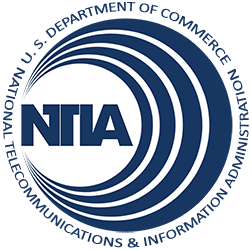Exploring the Digital Divide
NTIA and the Department of Commerce's Economics and Statistics Administration (ESA) recently released a report that analyzes broadband Internet adoption and use across the United States. “Exploring the Digital Nation,” the new study, finds that although socio-economic factors like income and education are strongly associated with broadband Internet use, they are not the sole determinants of adoption. Even after accounting for socio-economic factors, significant gaps in broadband adoption persist along racial, ethnic, and geographic lines. For example, White households had higher broadband adoption rates than African American and Hispanic households, and urban residents were more likely than their rural counterparts to adopt broadband Internet, even after adjusting for socio-economic factors.
Americans who did not use the Internet at all – whether inside or outside the home – most commonly cited lack of interest or need as the primary reason. In contrast, those who lacked the Internet at home but who did use it elsewhere most commonly cited affordability as the reason they were not subscribers, as did those who only had dial-up Internet access at home.
The report’s findings are based on data collected through a survey of approximately 54,000 households and 129,000 citizens – the largest survey of its kind. Commissioned by NTIA and conducted by the U.S. Census Bureau, the survey provides compelling information on the state of broadband Internet use across America, including an unprecedented level of examination of Internet adoption by persons with disabilities.
In addition, the report makes a pioneering use of regression analysis, adjusting the findings for socio-economic factors in order to achieve a greater understanding of the digital divide.
Assistant Secretary Strickling said that the report underscores “there is no simple ‘one size fits all’ solution to closing the digital divide. A combination of approaches makes sense, including targeted outreach programs to rural and minority populations emphasizing the benefits of broadband.”
Many BTOP projects are doing just that. For example:
The California Emerging Technology Fund is helping residents in areas with high unemployment to develop information technology, digital literacy, and other skills to improve job placement. It recently conducted broadband outreach targeted to the Hispanic community and sponsored Computer Help Day events with Chinese-speaking seniors in San Francisco and San Mateo.
In West Virginia, the Future Generations Graduate School is working to increase broadband adoption in predominantly low-income, rural communities by making broadband available to the public at local fire stations, providing digital literacy training, and using online content that is relevant to the community.
A University of Massachusetts project is addressing the digital divide through multi-language outreach. For example, it is offering relevant job-related and broadband training in English, Spanish, and Khmer – as it is serving the nation’s second largest Cambodian community.
These and other BTOP projects will help narrow the digital divide but can’t do the job alone. We are hopeful the new Digital Nation report will be useful to the larger community working to close the gap.
Read the full report here: www.ntia.doc.gov/reports/2010/ESA_NTIA_US_Broadband_Adoption_Report_11082010.pdf
